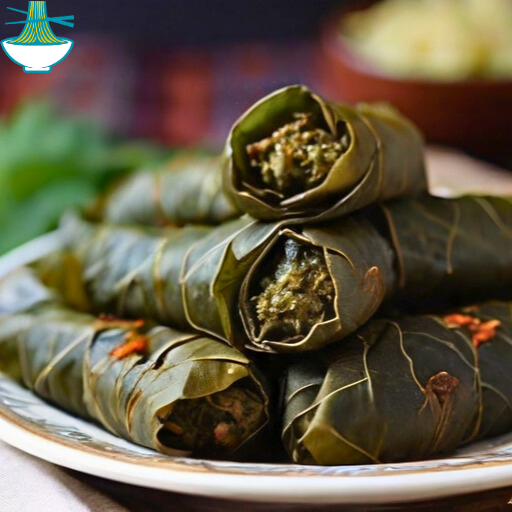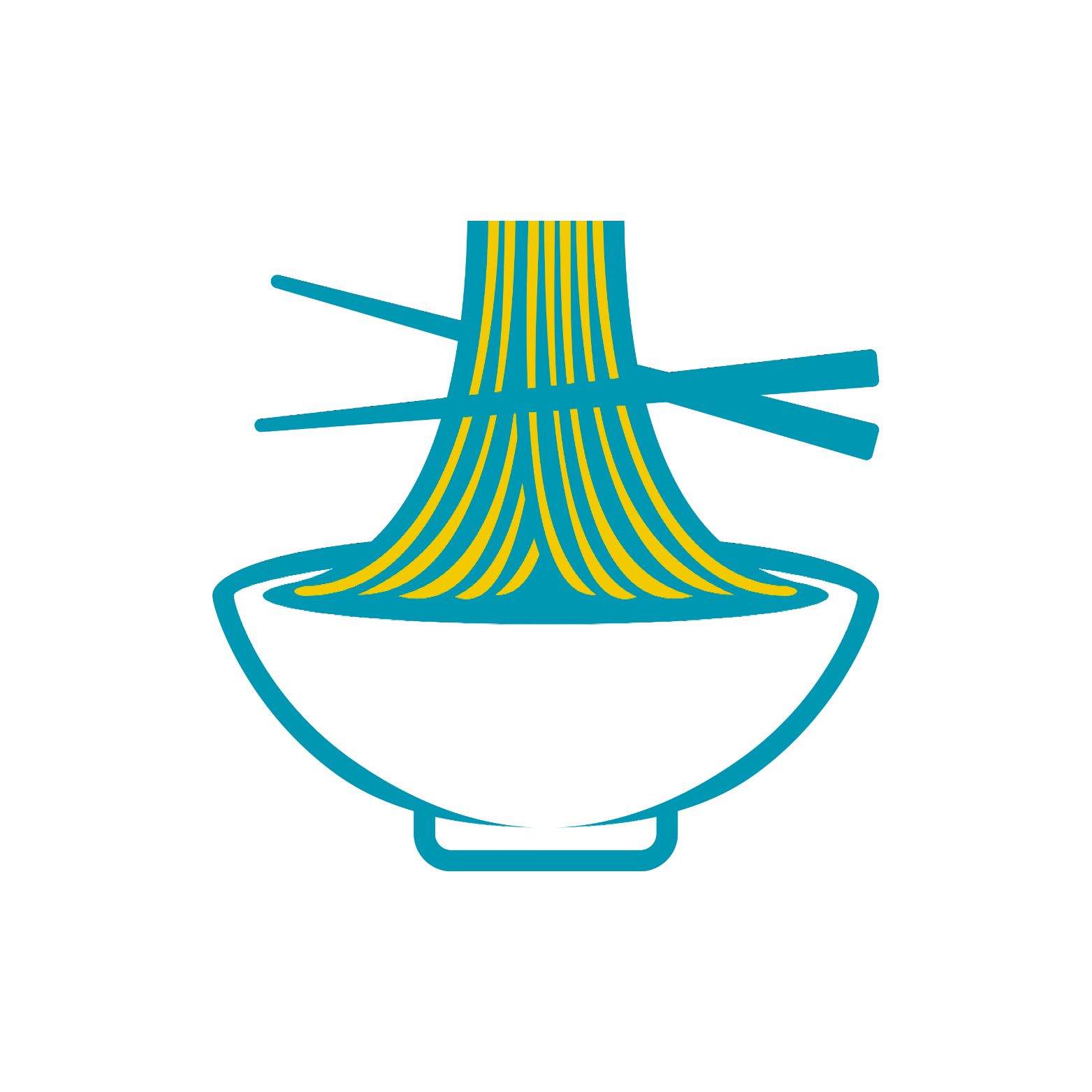Armenian Yalanchi, a vegetarian delight, is a flavorful rendition of stuffed grape leaves rooted in Armenian tradition. The name "yalanchi sarma" humorously translates to "liar," distinguishing this meat-free dish from the classic meat-filled sarma. Packed with a blend of rice, herbs, and aromatic spices, Yalanchi offers a unique combination of nutrients, including fiber, vitamins A and C, and essential minerals. While it promotes digestion and supports heart health, overindulgence may lead to digestive discomfort due to its high fiber content. Celebrated at family gatherings and festive occasions, Yalanchi embodies Armenian hospitality and cultural heritage in every bite.

Ingredients:
For the Grape Leaves:
-1 jar of grape leaves (about 60-70 leaves)
-1 cup long-grain white rice, washed and drained
-1 large onion, finely chopped
-1/2 cup olive oil
-1/4 cup pine nuts
-1/4 cup currants
-1 cup hot water
-1/4 cup fresh parsley, finely chopped
-1/4 cup fresh dill, finely chopped
-Salt and pepper to taste
For the Cooking Liquid:
-2 cups vegetable or chicken broth
-1/4 cup lemon juice
2 tablespoons olive oil
Instructions:
Preparing the Grape Leaves:
1- Rinse the grape leaves under cold water to remove excess brine.
2- Gently separate the leaves and trim any tough stems.
3- In a large pot, blanch the grape leaves in boiling water for about 2-3 minutes. Drain and set aside.
Preparing the Filling:
1- In a skillet, heat the olive oil over medium heat. Sauté the chopped onions until translucent.
2- Add the rice and continue cooking, stirring occasionally, until the rice is lightly toasted.
3- Stir in the pine nuts and currants, cooking for an additional 2-3 minutes.
4- Add the hot water, parsley, dill, salt, and pepper. Simmer until the rice absorbs the liquid and becomes partially cooked. Remove from heat and let it cool.
Assembly:
1- Place a grape leaf on a flat surface, vein side up. Trim any tough stem.
2- Spoon a small amount of the rice mixture onto the center of the leaf, near the stem end.
3- Fold the sides of the leaf over the filling, then roll it tightly from the bottom to the top, forming a compact cylinder.
Cooking:
1- Arrange the stuffed grape leaves seam-side down in a large pot, packing them tightly.
2- In a bowl, mix the vegetable or chicken broth, lemon juice, and olive oil. Pour the mixture over the stuffed grape leaves.
3- Place a heatproof plate or a layer of reserved grape leaves on top to prevent them from unraveling during cooking.
4- Cover the pot and simmer over low heat for 45-60 minutes or until the rice is fully cooked.
Serving:
1- Allow the Yalanchi to cool slightly before serving.
2- Garnish with additional fresh parsley or dill.
3- Serve with a dollop of yogurt or a squeeze of lemon if desired.
Armenian Yalanchi is best enjoyed warm or at room temperature, making it a delightful appetizer or main course for any gathering.
Note:
- Excess salt from brine-packed grape leaves or added seasoning may increase sodium levels. Rinse the leaves thoroughly to minimize this.
- Olive oil and pine nuts add healthy fats but can increase calorie count. Moderation is key for weight-conscious individuals.
FAQs
1.What is the difference between Yalanchi and Dolma?
- Yalanchi is a vegetarian version of stuffed grape leaves, traditionally filled with rice, herbs, and spices. In contrast, Dolma often includes meat as part of the stuffing.
2.Can other types of leaves be used instead of grape leaves?
- Yes, alternatives like cabbage leaves or chard can be used. However, the taste and texture may vary. Ensure they are blanched appropriately for pliability.
3.What are some low-carb substitutes for rice?
- Cauliflower rice or finely chopped zucchini can be used as low-carb alternatives, though they may slightly alter the texture and flavor.
4.Can fresh grape leaves be used instead of jarred ones?
- Absolutely. Fresh grape leaves should be thoroughly washed and blanched longer to soften them to achieve similar results.
5.What type of rice works best for Yalanchi?
- Long-grain rice is ideal due to its light and fluffy texture. Basmati rice is a great alternative if long-grain rice is unavailable.
6.Can Yalanchi be prepared without olive oil?
- Yes, you can substitute olive oil with other vegetable oils, but olive oil lends the authentic, rich flavor characteristic of traditional Yalanchi.
7.How can Yalanchi be served creatively?
- Serve it with a drizzle of mint yogurt sauce, tahini dip, or a tangy tomato salsa for a unique twist.
8.What is the best way to reheat leftover Yalanchi?
- Place the rolls in a pot over low heat with a splash of water or vegetable broth, cover, and gently warm them until heated through.
9.Is Yalanchi suitable for children?
- Yes, it’s nutritious and mild. However, reduce the spices if children are not accustomed to strong flavors.
10.How should Yalanchi be stored, and what is the best way to reheat it?
- To store cooked Yalanchi, keep it in an airtight container in the refrigerator for up to 3-4 days. For longer storage, you can freeze it for up to 1 month by wrapping it tightly in plastic wrap and placing it in a freezer-safe container. To reheat, thaw frozen Yalanchi overnight in the refrigerator, then warm it gently in a pot with a small amount of broth or water to retain its moisture.
Health Benefits:
- Supports Digestive Health: The high fiber content in grape leaves, rice, and currants promotes a healthy digestive system.
- Rich in Antioxidants: Ingredients like olive oil, parsley, and dill provide antioxidants that support heart health and reduce inflammation.
- Good Source of Essential Nutrients: Vitamins A, C, and K from grape leaves and herbs contribute to better immunity and bone health.
Nutritional Values
Nutritional values can vary based on specific brands and preparation methods, but here are approximate values for the listed ingredients:
1. Grape Leaves (60-70 leaves in a jar):
Calories: 10-15 calories per leaf
Carbohydrates: 2-3 grams per leaf
Fiber: 0.5-1 gram per leaf
Protein: 0.5 grams per leaf
Fat: 0 grams per leaf
benefits:
Rich in fiber, aiding digestion.
Contains vitamins A, C, and K.
May have anti-inflammatory properties.
2. Long-Grain White Rice (1 cup, cooked):
Calories: 200 calories
Carbohydrates: 45 grams
Fiber: 0.6 grams
Protein: 4 grams
Fat: 0.4 grams
benefits:
Good source of energy.
Contains essential minerals like manganese and phosphorus.
Provides small amounts of protein.
3. Large Onion (1, finely chopped):
Calories: 45 calories
Carbohydrates: 11 grams
Fiber: 2.5 grams
Protein: 1.2 grams
Fat: 0.1 grams
benefits:
High in antioxidants, may boost heart health.
Contains anti-inflammatory compounds.
Rich in vitamins C and B6.
4. Olive Oil (1/2 cup):
Calories: 960 calories
Carbohydrates: 0 grams
Fiber: 0 grams
Protein: 0 grams
Fat: 108 grams
benefits:
Healthy monounsaturated fats support heart health.
Contains antioxidants with anti-inflammatory effects.
May help reduce the risk of chronic diseases.

5. Pine Nuts (1/4 cup):
Calories: 230 calories
Carbohydrates: 4.8 grams
Fiber: 1 gram
Protein: 5 grams
Fat: 23 grams
benefits:
Good source of healthy fats.
Rich in essential minerals like magnesium and zinc.
Contains antioxidants and may support heart health.
6. Currants (1/4 cup):
Calories: 100 calories
Carbohydrates: 26 grams
Fiber: 2 grams
Protein: 1 gram
Fat: 0 grams
benefits:
Packed with antioxidants.
Good source of dietary fiber.
Provides vitamins A and C.
7. Hot Water (1 cup):
Calories: 0 calories
benefits:
Essential for the cooking process.
Hydrates the body.
8. Fresh Parsley (1/4 cup, chopped):
Calories: 1 calorie
Carbohydrates: 0.2 grams
Fiber: 0.1 grams
Protein: 0.1 grams
Fat: 0 grams
benefits:
Rich in vitamins K, C, and A.
Contains antioxidants.
May have anti-inflammatory properties.
9. Fresh Dill (1/4 cup, chopped):
Calories: 1 calorie
Carbohydrates: 0.2 grams
Fiber: 0.1 grams
Protein: 0.1 grams
Fat: 0 grams
benefits:
Good source of vitamins A and C.
Contains anti-bacterial properties.
Supports digestion.
10. Salt and Pepper (to taste):
Negligible caloric content
benefits:
Adds flavor; moderation is key.
11. Vegetable or Chicken Broth (2 cups):
Calories: 20-30 calories (depending on the type and brand)
Carbohydrates: 2-4 grams
Fiber: 0-1 gram
Protein: 1-2 grams
Fat: 0-2 grams
benefits:
Adds depth of flavor.
May provide essential nutrients from vegetables or meat.
12. Lemon Juice (1/4 cup):
Calories: 4 calories
Carbohydrates: 1.3 grams
Fiber: 0.1 grams
Protein: 0.1 grams
Fat: 0 grams
benefits:
Rich in vitamin C.
Adds a tangy flavor.
May aid digestion.
13. Olive Oil (2 tablespoons):
Calories: 240 calories
Carbohydrates: 0 grams
Fiber: 0 grams
Protein: 0 grams
Fat: 28 grams
benefits:
Enhances flavor and texture.
Provides healthy monounsaturated fats.
These values are approximate and can vary based on specific brands and variations in ingredient sizes.


Comments